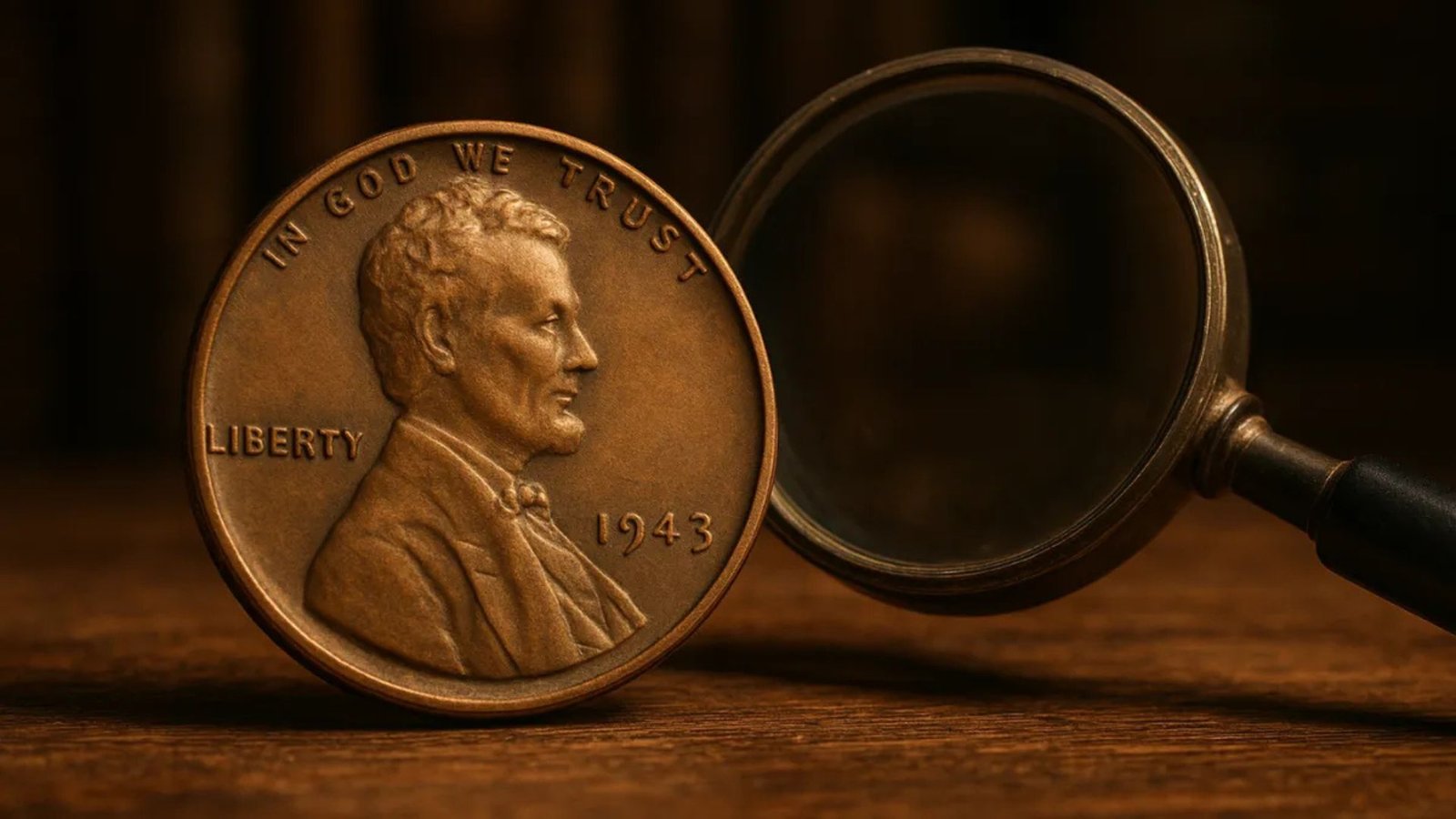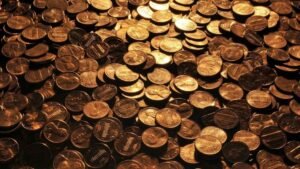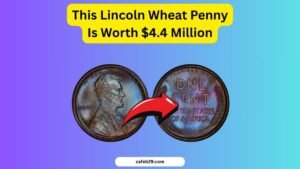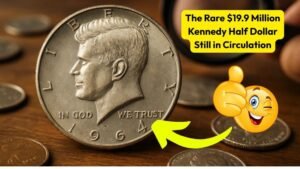The Lincoln Wheat Penny is one of the most famous coins in American history. Some of these pennies are worth a lot of money, with one rare version selling for $1.9 million! This article explores why certain Lincoln Wheat Pennies are so valuable, their history, and how you can spot one. Whether you’re a coin collector or just curious, this guide will help you understand the excitement around these rare coins.
What Is the Lincoln Wheat Penny?
The Lincoln Wheat Penny is a one-cent coin produced by the United States Mint from 1909 to 1958. It was designed by Victor David Brenner to honor President Abraham Lincoln’s 100th birthday. The front of the coin (called the obverse) shows Lincoln’s portrait, while the back (called the reverse) has two wheat stalks, giving it the name “Wheat Penny.”
Why Are Some Wheat Pennies So Valuable?
Certain Wheat Pennies are worth a fortune because they are rare, have unique features, or were made by mistake. These factors make them highly sought after by collectors. For example, a 1943 Lincoln Wheat Penny made of bronze (instead of the usual steel) sold for $1.9 million because only a few were accidentally made.
The History of the Lincoln Wheat Penny
The Lincoln Wheat Penny was first minted in 1909, making it the first U.S. coin to feature a real person’s face. Before this, coins usually had symbols like Lady Liberty. The design was a big deal because it celebrated Lincoln, a beloved president. Over the years, the Mint made billions of these pennies, but some years and versions are much rarer than others.
Key Dates and Rare Varieties
Some Wheat Pennies stand out due to their rarity or unique errors. Here are the most valuable ones:
| Year | Variety | Why It’s Valuable | Estimated Value |
|---|---|---|---|
| 1909-S VDB | Initials on reverse | Only 484,000 made with designer’s initials | $1,000 – $100,000+ |
| 1943 Bronze | Minting error | Accidentally made in bronze instead of steel | Up to $1.9 million |
| 1955 Double Die | Error in design | Letters and date appear doubled | $1,000 – $25,000+ |
| 1969-S Double Die | Error in design | Doubled image on the front | $10,000 – $100,000+ |
1909-S VDB: The Rare Gem
The 1909-S VDB penny is famous because it was minted in San Francisco with the designer’s initials (VDB) on the back. Only 484,000 were made before the initials were removed, making this coin very rare.
1943 Bronze: The Million-Dollar Mistake
During World War II, pennies were made of steel to save copper. However, a few 1943 pennies were accidentally struck in bronze. These are incredibly rare and can fetch up to $1.9 million at auctions.
1955 and 1969-S Double Die Errors
These pennies have a “double die” error, where the design was stamped twice, making the text and image look doubled. Collectors love these because they’re unique and hard to find.
How to Spot a Valuable Lincoln Wheat Penny
Finding a valuable Wheat Penny takes a sharp eye. Here’s how you can check if you have a rare one:
- Check the Date and Mint Mark: Look for key dates like 1909-S, 1943, 1955, or 1969-S. The mint mark (a small letter like “S” for San Francisco or “D” for Denver) is usually below the date.
- Look for Errors: Check for doubled letters or numbers using a magnifying glass. Errors like the double die or wrong metal (bronze instead of steel) are valuable.
- Examine Condition: Coins in great condition (with clear details and no wear) are worth more. Use a grading scale like “Good,” “Fine,” or “Mint State” to assess them.
- Get It Appraised: If you think you have a rare penny, take it to a professional coin dealer or grading service like PCGS or NGC for an expert opinion.
Tools You’ll Need
- A magnifying glass or loupe to see small details.
- A coin guidebook, like the “Red Book” (A Guide Book of United States Coins), for reference.
- A reputable coin dealer or grading service for verification.
Where to Find Lincoln Wheat Pennies
You might already have a valuable penny in your pocket! Here are some places to look:
- Pocket Change: Check your spare change or old coin jars.
- Coin Rolls: Buy rolls of pennies from banks and search through them.
- Estate Sales or Flea Markets: Old coin collections often turn up at these places.
- Coin Shops or Online Marketplaces: Purchase from reputable dealers or platforms like eBay, but beware of fakes.
Tips for Safe Collecting
- Always buy from trusted sellers to avoid counterfeit coins.
- Store coins in protective holders to prevent damage.
- Research the coin’s history and value before selling or buying.
Why Collectors Love Wheat Pennies
Wheat Pennies are more than just money—they’re pieces of history. Collectors are drawn to their unique designs, historical significance, and the thrill of finding a rare one. The $1.9 million sale of a 1943 bronze penny shows how exciting this hobby can be. Plus, collecting coins can be a fun and educational way to connect with the past.
Conclusion
The Lincoln Wheat Penny is a small coin with a big story. From its historical roots to its rare, million-dollar versions, it captures the imagination of collectors and history buffs alike. By learning about key dates, errors, and how to spot valuable pennies, you can join the quest for these treasures. Whether you’re searching your change or building a collection, the Wheat Penny offers a fascinating journey into America’s past.
FAQs
What makes a Lincoln Wheat Penny valuable?
A Wheat Penny is valuable if it’s rare, has a minting error (like the 1943 bronze or 1955 double die), or is in excellent condition. Key dates like 1909-S VDB are also highly sought after.
How can I tell if my penny is rare?
Check the date, mint mark, and look for errors like doubled text or the wrong metal. Use a magnifying glass and compare it to a coin guide. For valuable finds, get it appraised by a professional.
Where can I sell a valuable Wheat Penny?
You can sell to coin dealers, at auctions, or on online platforms like eBay. Always verify the coin’s authenticity with a grading service like PCGS or NGC before selling.
Are all Lincoln Wheat Pennies worth a lot?
No, most Wheat Pennies are worth only a few cents. Only specific years, errors, or those in top condition are valuable.
How do I start collecting Wheat Pennies?
Start by checking pocket change, buying coin rolls from banks, or visiting coin shops. Learn about key dates and errors, and use a guidebook to help you identify valuable coins.




